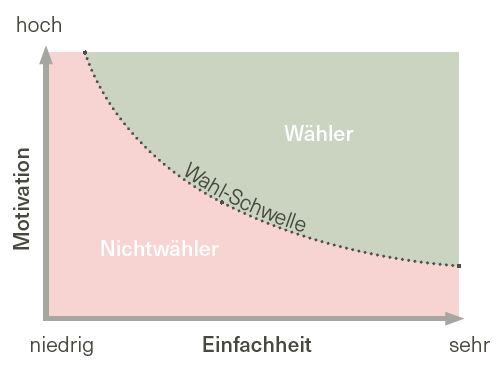Organ donor ID redesigned
How can we get more people to become organ donors?
How human-centered thinking can help increase voter turnout.
In elections, the path from eligible voter to voter has many bottlenecks at which we can lose potential voters. If an eligible voter is not motivated enough to take the necessary steps at just one of these bottlenecks, or lacks the ability to do so, he or she will not participate in the election and voter turnout will drop.
The more elaborate and complex the steps required to participate in the election, the higher the motivation of the eligible voter must be.
Conversely, this means that the less time and energy the voter has to invest, the more likely he or she is to participate in the election.

By making the voter journey - the entire path, including all cycles before and after the election, that a potential voter goes through - as intuitive, simple and enjoyable as possible, we can significantly increase voter turnout, especially among less motivated voters.
We have illustrated this principle, the human-centered design of the voter journey, using the example of the election notification for the 2018 European elections in Frankfurt
Before: The election notification for the election to the Hessian State Parliament 2018 expected a high investment of time and energy from the eligible voter. The important information is not immediately recognizable, and the structure is not self-explanatory.
After: The essential information was made much quicker to grasp and the form was structured to be self-explanatory. This makes the writing seem less daunting and minimizes the necessary investment of time and energy."
We can increase voter turnout by minimizing the reasons that prevent people from voting.
The simpler we can make the voting process and the more we can motivate eligible voters to take the necessary steps to successfully participate in the election, the higher the turnout will be.

hello@menschentum.com
Menschentum.
Römerberg 15
60311 Frankfurt
Germany